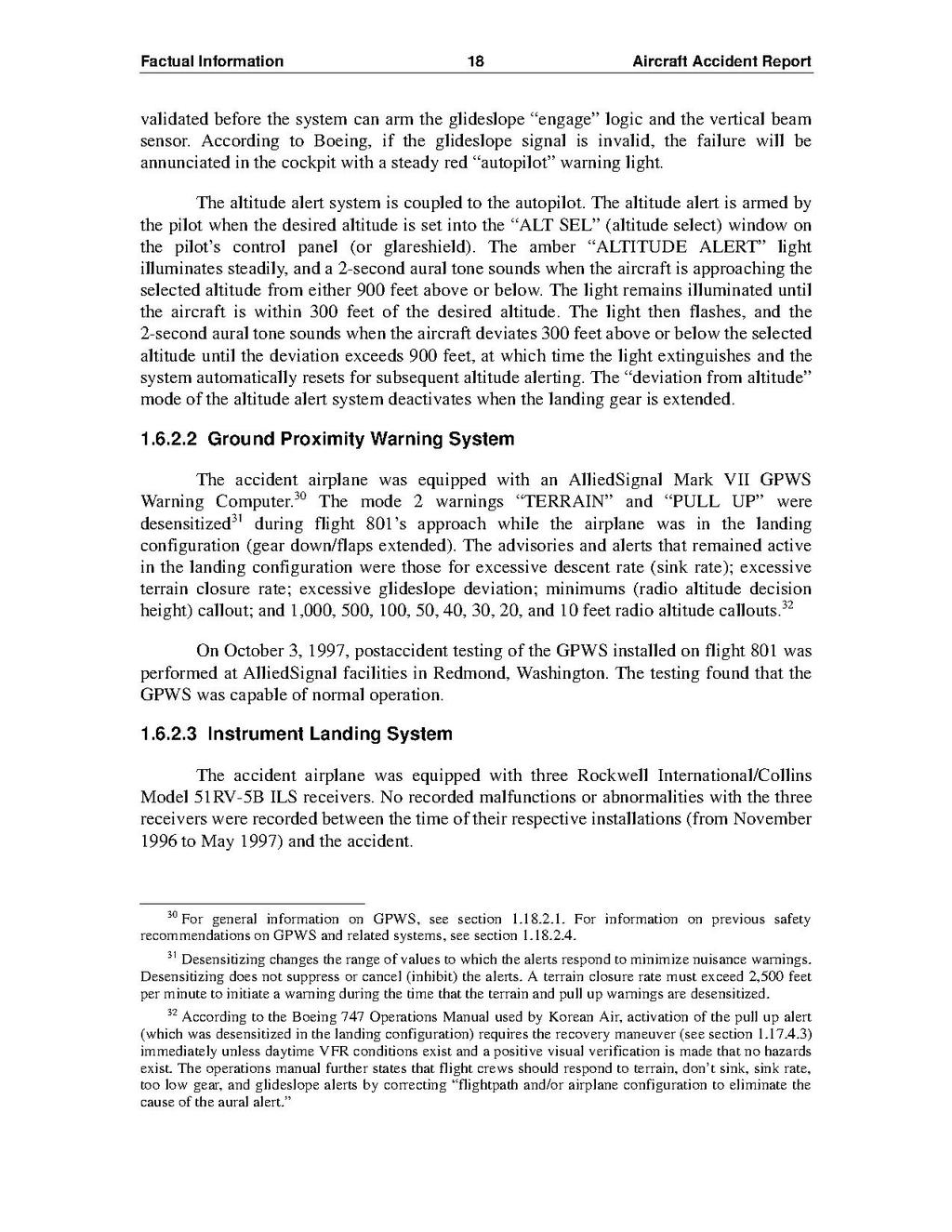validated before the system can arm the glideslope "engage" logic and the vertical beam sensor. According to Boeing, if the glideslope signal is invalid, the failure will be annunciated in the cockpit with a steady red "autopilot" warning light. The altitude alert system is coupled to the autopilot.
The altitude alert is armed by the pilot when the desired altitude is set into the "ALT SEL" (altitude select) window on the pilot's control panel (or glareshield). The amber "ALTITUDE ALERT" light illuminates steadily, and a 2-second aural tone sounds when the aircraft is approaching the selected altitude from either 900 feet above or below. The light remains illuminated until the aircraft is within 300 feet of the desired altitude. The light then flashes, and the 2-second aural tone sounds when the aircraft deviates 300 feet above or below the selected altitude until the deviation exceeds 900 feet, at which time the light extinguishes and the system automatically resets for subsequent altitude alerting. The "deviation from altitude" mode of the altitude alert system deactivates when the landing gear is extended.
1.6.2.2 Ground Proximity Warning System
The accident airplane was equipped with an AlliedSignal Mark VII GPWS Warning Computer.[1] The mode 2 warnings "TERRAIN" and "PULL UP" were desensitized[2] during flight 801's approach while the airplane was in the landing configuration (gear down/flaps extended). The advisories and alerts that remained active in the landing configuration were those for excessive descent rate (sink rate); excessive terrain closure rate; excessive glideslope deviation; minimums (radio altitude decision height) callout; and 1,000, 500, 100, 50, 40, 30, 20, and 10 feet radio altitude callouts.[3]
On October 3, 1997, postaccident testing of the GPWS installed on flight 801 was performed at AlliedSignal facilities in Redmond, Washington. The testing found that the GPWS was capable of normal operation. 1.6.2.3 Instrument Landing System The accident airplane was equipped with three Rockwell International/Collins Model 51RV-5B ILS receivers. No recorded malfunctions or abnormalities with the three receivers were recorded between the time of their respective installations (from November 1996 to May 1997) and the accident.
- ↑ For general information on GPWS, see section 1.18.2.1. For information on previous safety recommendations on GPWS and related systems, see section 1.18.2.4.
- ↑ Desensitizing changes the range of values to which the alerts respond to minimize nuisance warnings. Desensitizing does not suppress or cancel (inhibit) the alerts. A terrain closure rate must exceed 2,500 feet per minute to initiate a warning during the time that the terrain and pull up warnings are desensitized.
- ↑ According to the Boeing 747 Operations Manual used by Korean Air, activation of the pull up alert (which was desensitized in the landing configuration) requires the recovery maneuver (see section 1.17.4.3) immediately unless daytime VFR conditions exist and a positive visual verification is made that no hazards exist. The operations manual further states that flight crews should respond to terrain, don't sink, sink rate, too low gear, and glideslope alerts by correcting "flightpath and/or airplane configuration to eliminate the cause of the aural alert."
